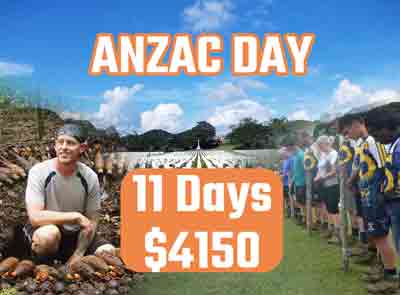The Battles for Kokoda Plateau: Three weeks of hell defending the gateway by David Cameron
Introduction
Delving into the annals of the Kokoda Campaign, one cannot ignore the powerful narrative woven by David W. Cameron in his seminal work, “The Battles for Kokoda Plateau.” This book serves as a poignant testimony to the harrowing experiences endured during the three weeks of hell defending the gateway to the Owen Stanleys. Let’s embark on a literary journey through the pages that recount the pivotal moments in this tumultuous chapter of World War II.
A Historical Prelude
Before we plunge into the heart of the conflict, Cameron sets the stage by illuminating the significance of the Kokoda Plateau. This verdant terrain, nestled in the Owen Stanley Range of Papua New Guinea, became the focal point of a relentless struggle during the early 1940s. The battles for Kokoda Plateau, a gateway to the Owen Stanleys, unfolded against a backdrop of fetid swamps, lowland jungles, and the unforgiving terrain that would soon turn into a crucible of war.
Three Weeks of Hell: Defending the Gateway
Cameron’s narrative skilfully captures the essence of the three weeks of hell defending the gateway to the Owen Stanleys. Through the eyes of those who fought valiantly, the author paints a vivid picture of the Australian soldiers facing an all-out Japanese attempt to capture Port Moresby. Short of ammunition and food, stranded in the rugged landscape, they stood resolute against the relentless Japanese onslaught.
Lost Australian Soldiers and Downed Airmen: A Bond Forged in War
In the crucible of battle, the stories of lost Australian soldiers and downed airmen intertwine with the broader narrative. The bonds formed in adversity, the comradeship shared in the face of mortal danger – these are the poignant threads that weave through Cameron’s account. The book provides a first-time, detailed examination of the camaraderie and sacrifices made by those who fought side by side.
The Japanese Onslaught: A Fight for Survival
At the heart of the narrative lies the relentless fight against the Japanese forces. Cameron meticulously details the Japanese attack on Port Moresby and the Kokoda Track, revealing the brutal reality faced by the defenders. Mortared and shelled, the Australian forces stood resilient, facing an enemy determined to advance. The author’s powerful storytelling sheds light on the adversities faced by the Australian troops in the jungles of Papua New Guinea.
The Strategic Importance of Port Moresby
In a strategic move, the Japanese launched an all-out attempt to capture Port Moresby, a move that would have far-reaching consequences for Australia and the Pacific. Cameron skillfully dissects the military strategy employed, providing a powerful new insight into the geopolitical ramifications of the Kokoda Campaign. The Pacific hung in the balance as forces clashed in a battle that reverberated far away from the shores of Australia.
The Human Element: Using Letters and Diaries
What elevates “The Battles for Kokoda Plateau” beyond a mere historical account is the human element infused through letters and diaries. Cameron, a leading military historian, draws on these personal accounts to breathe life into the individuals who fought on the Kokoda Track. The book becomes not just a chronicle of events but a testament to the resilience, fear, and courage displayed by those who faced the horrors of war.
Cameron’s Expertise and the Academic Perspective
As a leading military historian affiliated with the Australian National University, David W. Cameron brings a wealth of knowledge and expertise to his work. With numerous publications and a background in military history, including a first-class honours degree in 1989, Cameron’s analysis is both comprehensive and authoritative. His meticulous research and dedication to unraveling the complexities of the Kokoda Campaign shine through in every chapter.
The Unforgettable Chapters: Sydney’s Role and the Kokoda Track
Sydney, a city on Australia’s east coast, plays a pivotal role in the Kokoda Campaign. Cameron meticulously examines Sydney’s connection to the conflict and its impact on the home front. Furthermore, the Kokoda Track, a trail through the Owen Stanley Range, becomes a symbol of resilience and endurance. The author explores the challenges faced by those who traversed this treacherous path and the indomitable spirit that defined the journey.
Conclusion: Stories that Deserve Recognition
In conclusion, “The Battles for Kokoda Plateau” by David W. Cameron stands as a powerful testament to the sacrifices made during the Kokoda Campaign. The book not only narrates the historical events but also pays homage to the individuals who faced the horrors of war with unwavering determination. Through Cameron’s powerfully written prose, readers gain a profound understanding of the three weeks of hell defending the gateway to the Owen Stanleys, a chapter etched indelibly in Australia’s military history. “The Battles for Kokoda Plateau” deserves a place among the definitive works on the Pacific theater of the Second World War.




